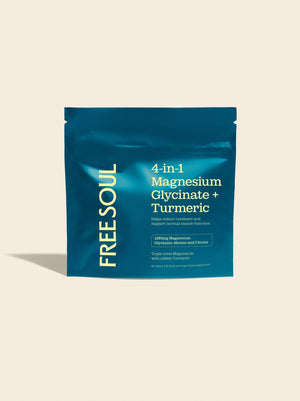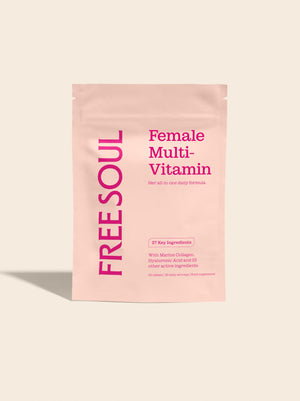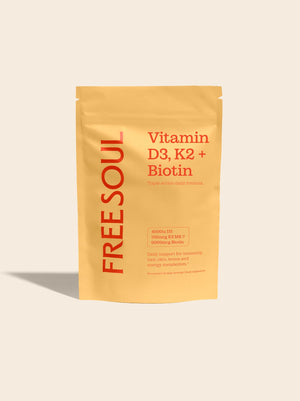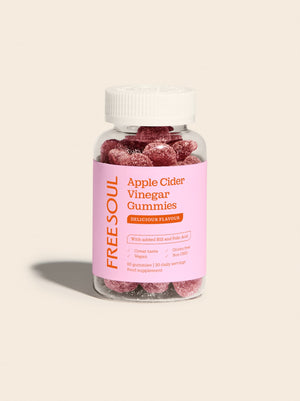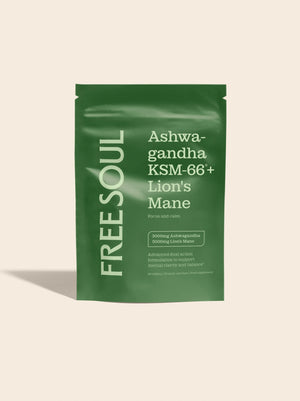This January we are on a mission to help our community learn more about the importance of protein for women’s health and increase their daily protein intake in 2024.
Protein is a key nutrient that women need in their diets to support their bone health, hair skin and nails and maintain their overall wellbeing. Not only do protein-rich foods help women feel fuller for longer, they can assist in weight control and promote hormonal balance. So, get your journal at the ready, as registered Nutritional Therapist, Marilia Chamon, shares her delicious recipes and easy protein swaps that you can add to your daily routine today!
What is Protein
As a Nutritional Therapist specialising in gut health, I understand the crucial role protein plays in our bodies, especially for women. Protein is more than just a nutrient; it's a building block of life, essential for the repair, growth, and maintenance of our tissues.
Proteins are large molecules composed of amino acids. Think of amino acids as the alphabet of protein; just as letters form different words, amino acids combine in various ways to create different proteins. Our body needs 20 different amino acids, nine of which are 'essential,' meaning we must obtain them through our diet as our body can't produce them.
Why Protein is Crucial for Women’s Health
For women, adequate protein intake supports muscle health, bone density, and hormonal balance. It’s particularly important for those leading an active lifestyle, undergoing pregnancy, or in the stages of menopause.
Understanding Protein-Rich Foods
- Animal-based Proteins: These include meat, poultry, fish, eggs, and dairy products. They provide complete proteins.
- Plant-based Proteins: Sources like legumes, nuts, seeds, and whole grains are great for those following a vegetarian or vegan diet. While most plant-based proteins are incomplete, combining different types can ensure you get all essential amino acids.
Tips to Include More Protein in Your Diet
- Diversity is Key: Include a variety of protein sources in your diet. This ensures you get a range of nutrients and amino acids.
- Quality Matters: Choose lean meats, opt for organic or grass-fed options when possible, and select fresh, unprocessed foods.
- Listen to Your Body: Protein needs can vary based on age, activity level, and health goals. Pay attention to how your body responds to different protein levels.
Easy Swaps to Incorporate More Protein into Your Diet
Let’s look at simple dietary swaps to increase your protein intake:
Choose Nuts and Seeds Over Processed Snacks
- Instead of reaching for ultra-processed snacks, try a handful of almonds, walnuts, or a mix of seeds. These not only provide protein but also healthy fats and fibre.
Swap Rice for Quinoa
- Quinoa is an excellent protein-rich alternative to rice. It's also gluten-free and contains all nine essential amino acids, making it a complete protein.
Make a Protein Smoothie or Shake
- If you are wanting a quick high-protein snack to enjoy on the go, try Free Soul’s Vegan Protein Blend, a delicious source of quality protein that you can add to your favourite smoothie recipes or enjoy alone as a shake.
Replace Regular Pasta with Legume-Based Pasta
- Instead of traditional pasta, opt for pasta made from chickpeas, lentils, or black beans. These alternatives significantly increase your protein intake.
Switch from Oat Milk to Soya Milk
- Soya milk is particularly high in protein, while oat milk is mainly rich in carbohydrates and natural sugars. Soya milk can be used in cereals, smoothies, and coffee.
Choose Greek Yoghurt Over Traditional Flavoured Yoghurts
- Greek yoghurt has more protein than regular yoghurt and is lower in sugar, making it a superior choice for a protein-rich diet.
Opt for Nut Butters Instead of Jam or Butter on Toast
- Spreading almond or peanut butter on your toast rather than jam or butter increases your protein intake and provides healthy fats.
Replace Crisps with Roasted Chickpeas
- For a crunchy snack, roasted chickpeas are excellent protein-rich alternatives to crisps.
Switch from Cereal to a Protein-Rich Yoghurt Bowl
- Instead of sugary cereals, make a protein bowl using Greek yoghurt mixed with, Free Soul’s Vegan Protein Blend, simply add your choice of toppings including seeds and more!
Replace Mayonnaise with Hummus in Sandwiches
- Hummus is rich in protein and adds a flavourful twist to sandwiches, making it a high protein alternative to mayonnaise.
Recipes For Inspiration
1. Breakfast: Spinach and Feta Protein Omelette
Ingredients:
- 2 large eggs
- 1 cup fresh spinach, chopped
- 1/4 cup feta cheese, crumbled
- 1/4 cup bell peppers, diced
- Salt and pepper to taste
- 1 tsp olive oil
Instructions:
- In a bowl, whisk the eggs until well beaten.
- Heat olive oil in a non-stick pan over medium heat.
- Add bell peppers and sauté for 2 minutes.
- Pour in the eggs and swirl to evenly spread them in the pan.
- As the eggs start to set, sprinkle chopped spinach and feta cheese over one half of the omelette.
- Once the eggs are fully set, fold the omelette in half, covering the spinach and feta.
- Cook for another minute, then transfer to a plate. Season with salt and pepper to taste.
2. Snack: Almond Butter Protein Balls
Ingredients:
- 1 cup oats
- 1/2 cup almond butter
- 1/4 cup honey
- 1/4 cup Free Soul Vegan Protein Blend
- 1/4 cup dark chocolate chips
- 2 tbsp chia seeds
- A pinch of salt
Instructions:
- In a large bowl, mix together oats, almond butter, honey, and protein powder until well combined.
- Stir in the chocolate chips and chia seeds.
- Roll the mixture into small balls, each about the size of a tablespoon.
- Place the protein balls on a baking sheet lined with parchment paper.
- Refrigerate for at least 30 minutes before serving.
3. Lunch or Dinner: Quinoa and Black Bean Stuffed Peppers
Ingredients:
- 4 large bell peppers, halved and seeded
- 1 cup quinoa, cooked
- 1 can black beans, drained and rinsed
- 1 cup corn kernels (fresh or frozen)
- 1/2 cup diced tomatoes
- 1 tsp cumin
- 1 tsp paprika
- 1/2 cup shredded cheese
- Salt and pepper to taste
- Fresh cilantro for garnish
Instructions:
- Preheat your oven to 350°F (175°C).
- In a bowl, combine the cooked quinoa, black beans, corn, tomatoes, cumin, paprika, salt, and pepper.
- Stuff each bell pepper half with the quinoa mixture.
- Place the stuffed peppers in a baking dish and cover with foil.
- Bake for 25-30 minutes, until the peppers are tender.
- Remove the foil, add cheese on top and bake for an additional 5 minutes.
- Garnish with fresh coriander before serving.
Embracing Protein in Your Daily Diet
Incorporating more protein into your diet doesn't have to be challenging. Simple swaps and mindful choices can significantly impact your overall health and wellbeing. Remember, a balanced diet is key to achieving your health goals, and protein plays a vital role in this balance!





